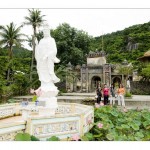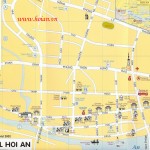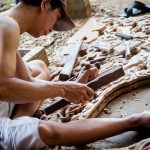Cham islands are supposed to be the first place where Cham people landed, coming to Quang Nam Province from Indonesia (small monuments, dikes and basin to grow up rice on terraces are hidden in the forest, 17th century pagodas and small temples in the two villages). Therefore, being well-known since earlier Cham domination (from 4th to 14th century), the island became one of the main port of Champa Kingdom.
The Champa people controlled the strategic Spice Trade over the centuries included the Chinese, Dutch & Portugese. From Cham the Champas colonized Central Vietnam. They were the first to discover & export swallow’s nests (salagne). They dug wells & terraces which are still used today. In the 15th Century the Vietnamese; retreating south from the Chinese, moved into Central Vietnam. This marked the end of the Champa kingdom. By the 17th century Hoi An was a successful port on the ‘silk route’.
From the 18th to 20th centuries Cu Lao Cham continued to thrive as an important sea port. Trade ships from the pacific would anchor on the leeward side to: make repairs, stock up on water, wood, & to trade; Aloe, camphor, vegetable oil, basil & swallow’s nests. Cu Lao Cham was given a strong Vietnamese identity. Most temples, pagodas and shrines were built by Vietnamese during the 18th – 20th centuries to reflect a strong sense of culture & nationality.
During & after the Vietnam War (1960-75) Cu Lao Cham became a place of refuge for Vietnamese families in the central region who wanted to escape the draft. Ironically, today, the hill top areas of Cu Lau Cham are controlled by the military & most of the homes on Cu Lao Cham have a shrine dedicated to family members who died in the war. These are different to ancestral shrines on the mainland because they include a portrait photographs of dead relatives.
According to archaeologists, Cu Lao Cham first settled there 3,000 years ago and established business contacts with external countries some 1,000 years ago. Up to now, Cu Lao Cham has preserved many architectural constructions which date back to the 18th and 20th century. They include the shrine dedicated to Than Yen Sao, built in 1843 at Bai Huong and Hai Tang Pagoda, built in 1753 on the western hillside of Hon Lao. Still, Cu Lao Cham has more to offer. After a three-hour canoe trip, one may hop over to the famed Well of the Cham people.
Source: hoian.co.uk
Joint us at Facebook to get more support!
Proud to be your local guide
Soure: hoian-tourism.com
Post Views:
1,724







